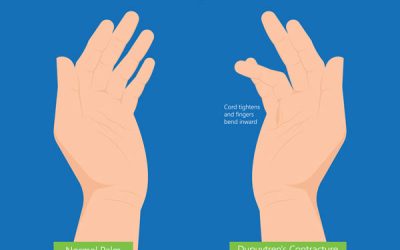The wrist has a similar arch concept as the foot. The first line of protection comes from the wrist arch support made up by the alignment of the wrist joints and the supporting soft tissue. Most of wrist and hands disorder began with a compromise of the arch that leads to a series of compensation patterns that eventually disturbs the natural shock absorption mechanisms predisposing to a range of pathologies.
Compensatory hypermobility pattern of dysfunction
The lack of motion (hypomobility) caused by a dysfunctional misalignment at the wrist joint (distal radial and Ulna), creates a need for the body to make up for that loss of movement somewhere else, causing the adjoining wrist joints to become more movable (hypermobility) to try to maintain the overall range of motion of the wrist and hand. In a short term, this compensatory mechanism allows the wrist and hand to keep up with the biomechanical demands at the time but in a medium to long term, If the main wrist dysfunction is not resolved, the wrist bones eventually become extremely flexible and as a result enters in a pattern of dysfunction and compromising the entire health of the hand.
Another important concept seen in the wrist is the keystone biomechanical principle which allows the arches to be maintained in an architecture mechanical advantage providing one of the most beneficial and least energy support systems in the body
A keystone is a wedge-shaped stone at the apex of an arch or typically round-shaped one at the apex of a vault. In both cases it is the final piece placed during construction and locks all the stones into position, allowing the arch or vault to bear weight.

Keystone-arch
Like the foot, there are 3 arches that made up the wrist: Medial, Transverse and Lateral arch. The common sequence of dysfunction begins with a misalignment of the Radial – Ulna (master bone of the wrist) joint, creating hypermobility of the scaphoid (Medial Arch stone bone) causing the inner arch to become compromised. The transverse arch is the next in the sequence to fail, due to the maintained hypermobility and over the flexibility of the wrist, the lunate (Transverse Arch stone bone) drops compromising the transverse arch which eventually causes the lateral arch to fail by the hypermobility of the triquetrum (Lateral arch stone bone) leading to a total wrist flat deformity.

Wrist-arch
Fixed hand position and the corresponding level of dysfunction
Fixed Flexed hand position, is the inability to extend the wrist due to a misalignment of the Lunate bone in a posterior direction

Fixed extension wrist position is the inability to flex the wrist due to a misalignment of the lunate bone in an anterior direction. This dysfunction is commonly seen in carpal tunnel syndrome

Assessment Protocol
Clinical assessment to identify the key joint dysfunctions of the Wrist following by two set of X-ray analysis.
Anterior – Posterior (AP) X-ray ankle view is essential for proper diagnosing the master joint of the wrist (Radial – Ulna) as the origin of poor arch mechanics starts from a dysfunctional radial and ulna bones.
Lateral Xray view is important to check the degree of the total arch compromised and the direction of misalignment of the lunate bone
Treatment protocol
Specific adjustments of key bones of the wrist (Radial, Ulna, Scaphoid and lunate) followed by a rehabilitation regime to strengthen the entire soft tissue support of the wrist and hand. In addition, corrective orthotics may be needed as part of the early rehab program.
Depending on the chronicity and level of arch compromised a minimum of 6 weeks up to 12 weeks of treatment care may be necessary to resolve this deformity




